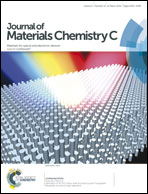Multifunctional fluorescent material based on metallomicelles trapped in silica nanochannels†
Abstract
Here we report the self-assembly of a metallomicelle/silica nanocomposite with mesoscopic structure using amphiphilic quinoline molecules as both structure-directing agents and ligands. The inorganic host alters the compatibility of the metallorganics to various polymers. The resulting nanocomposite is also a chemical stimulus-responsive material to fabricate sensors. This material provides sufficient physical integrity to be integrated into devices and microsystems.


 Please wait while we load your content...
Please wait while we load your content...